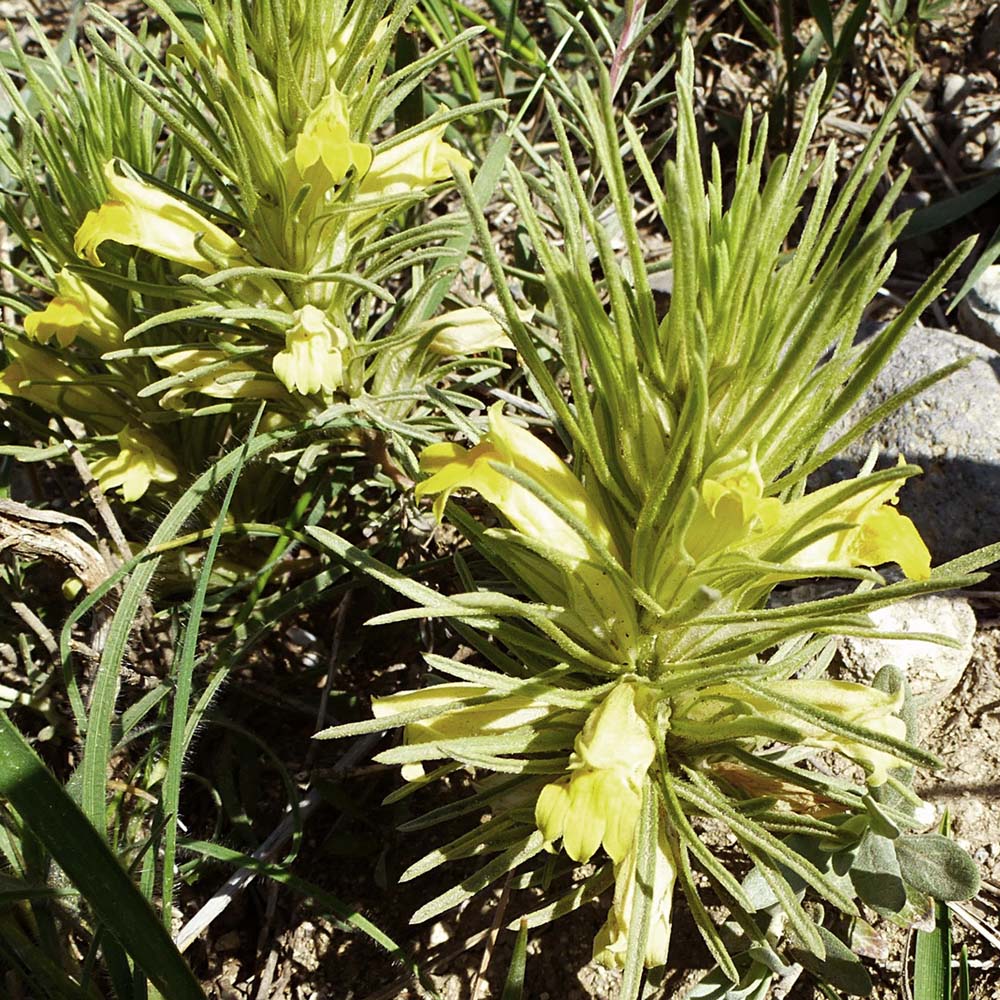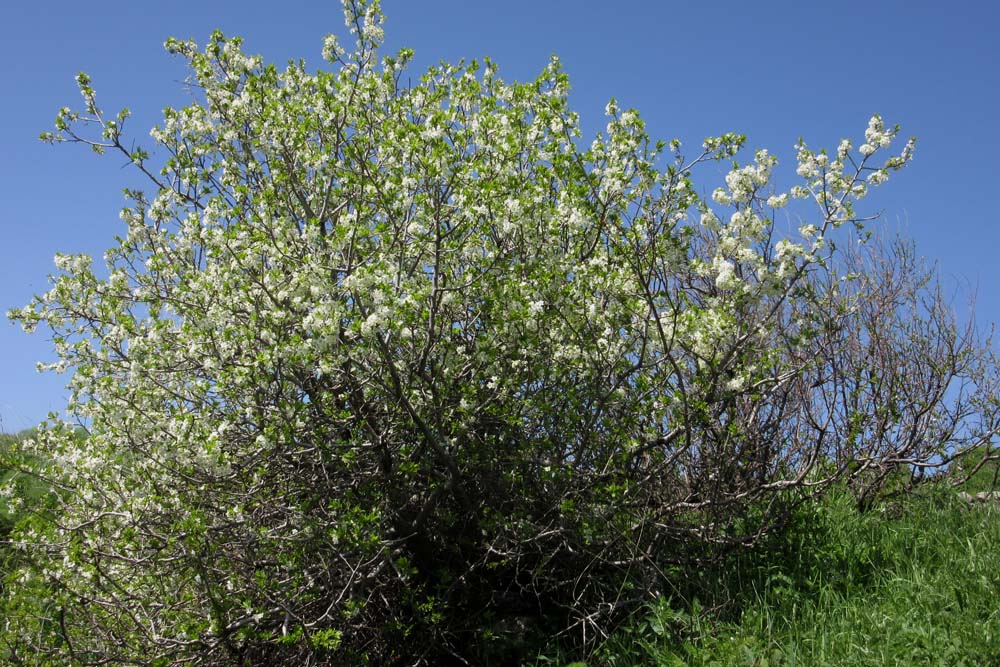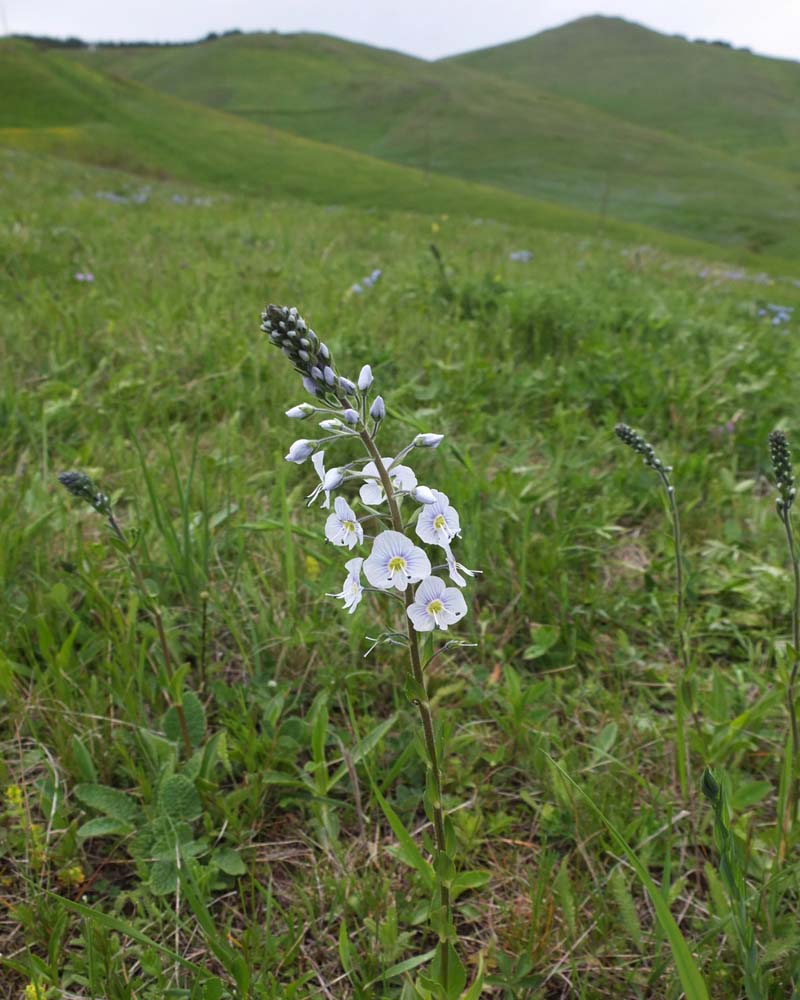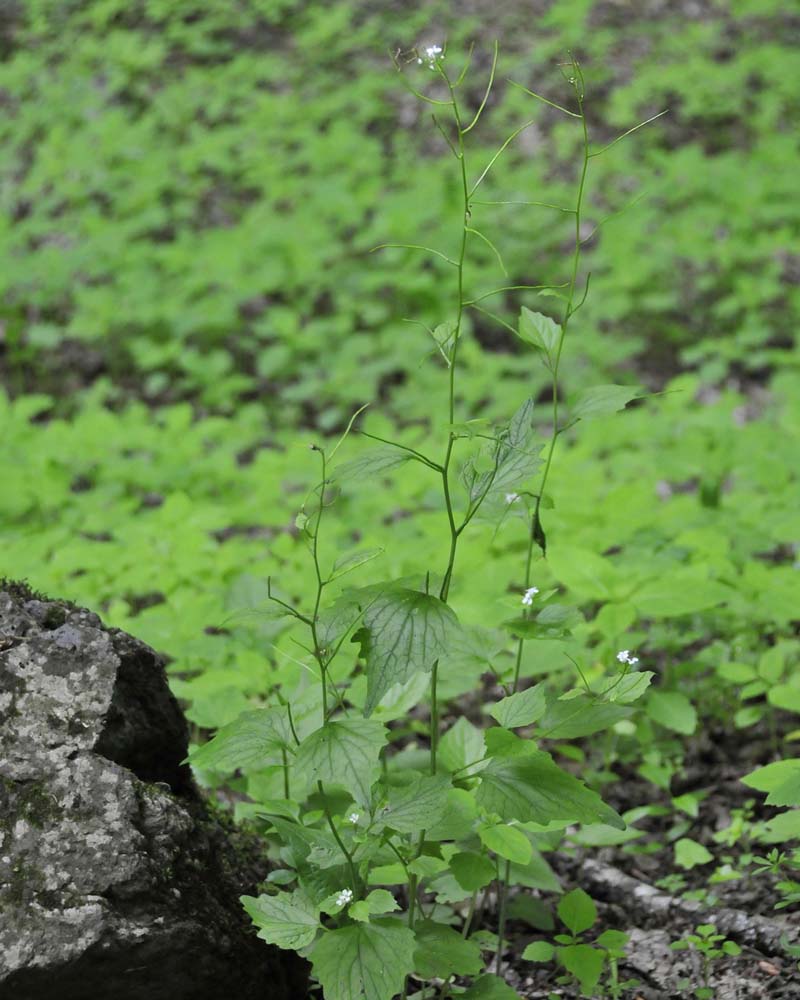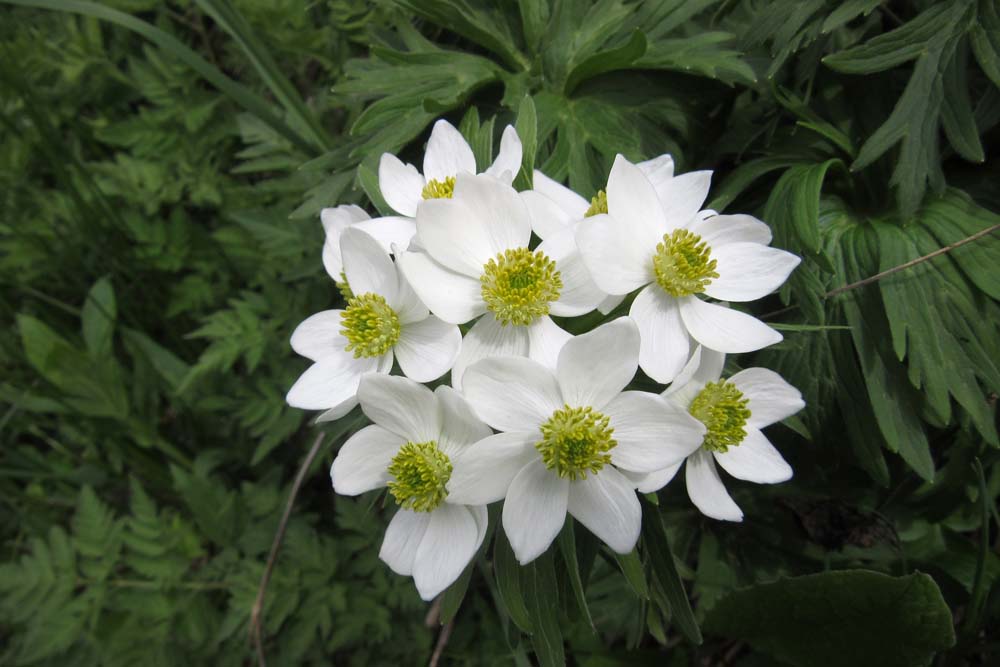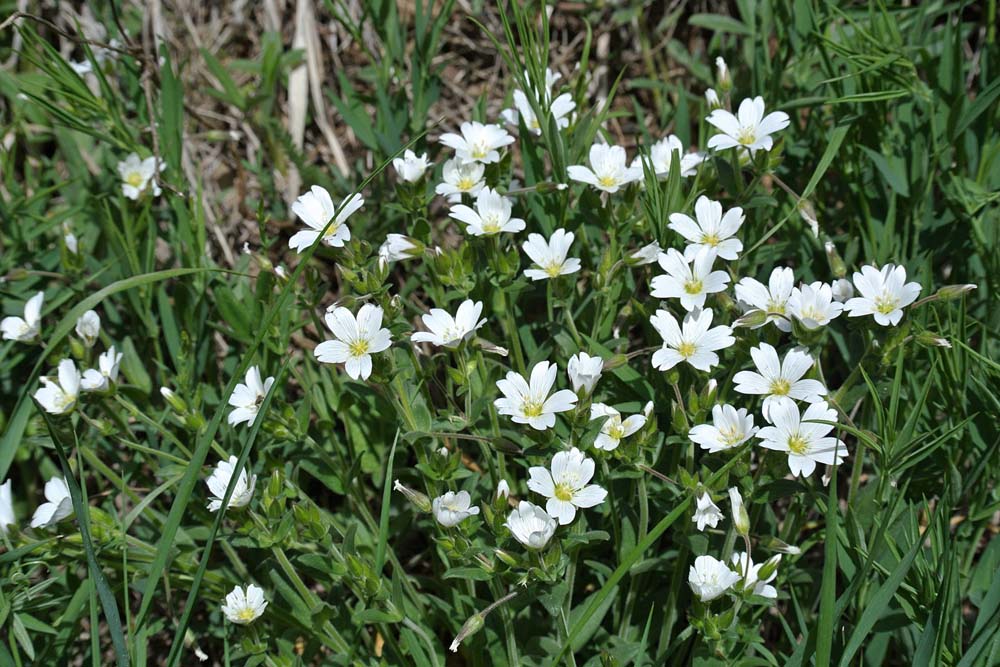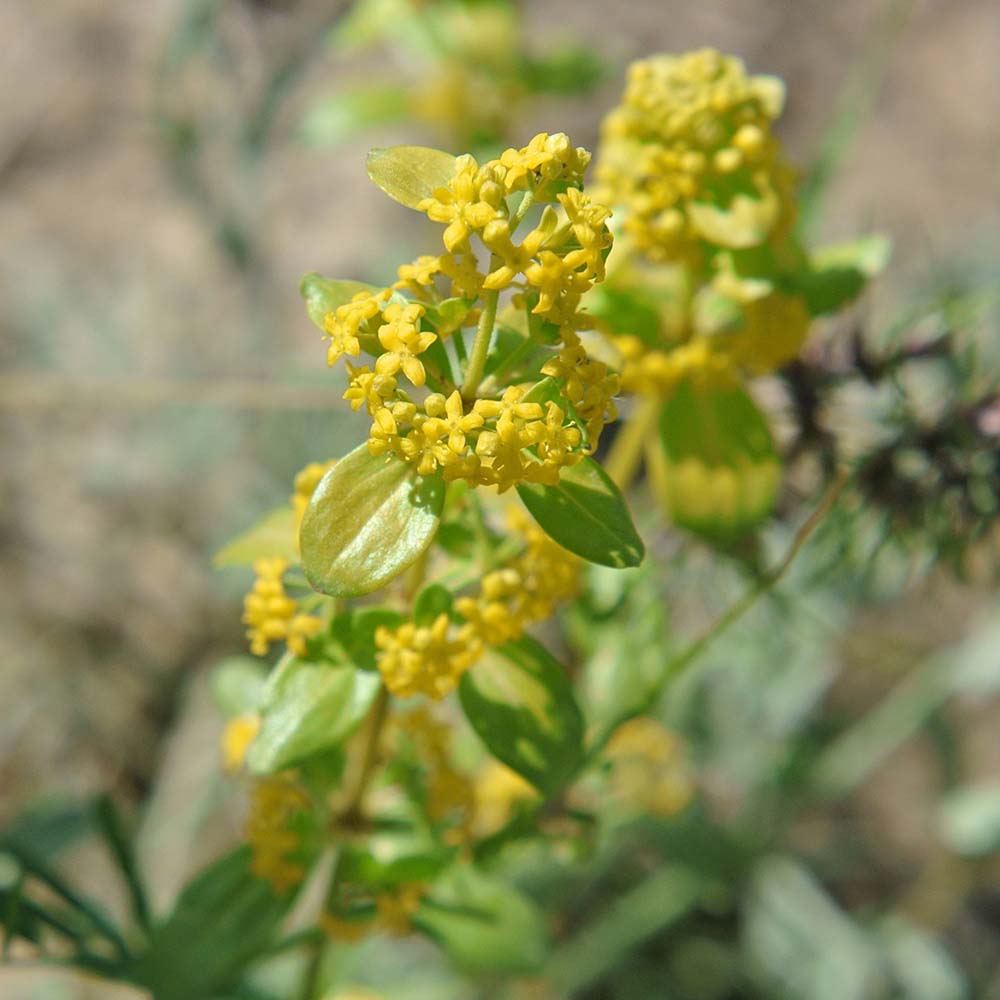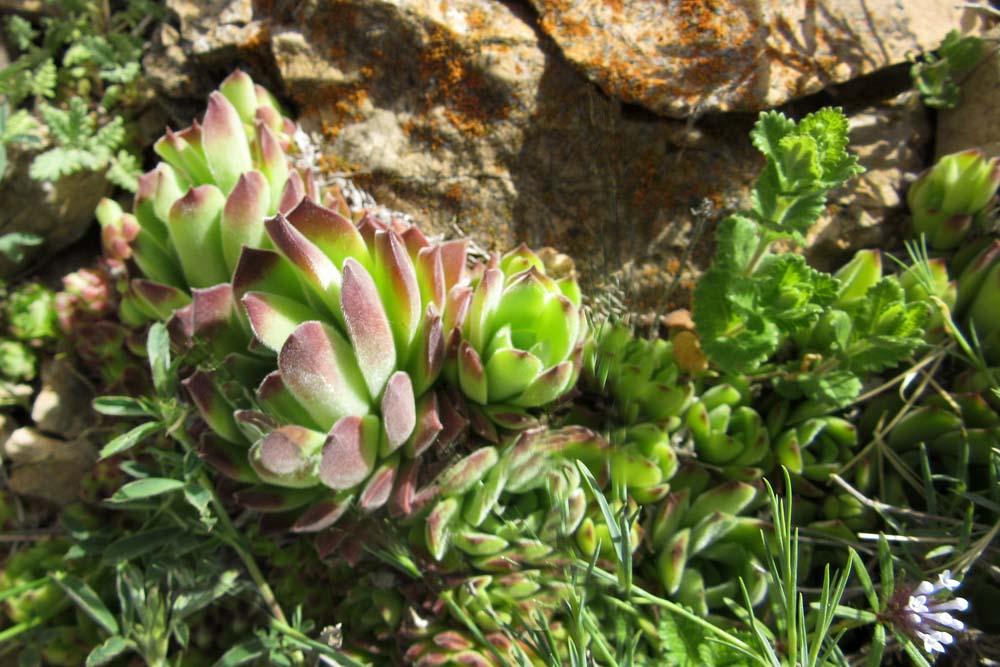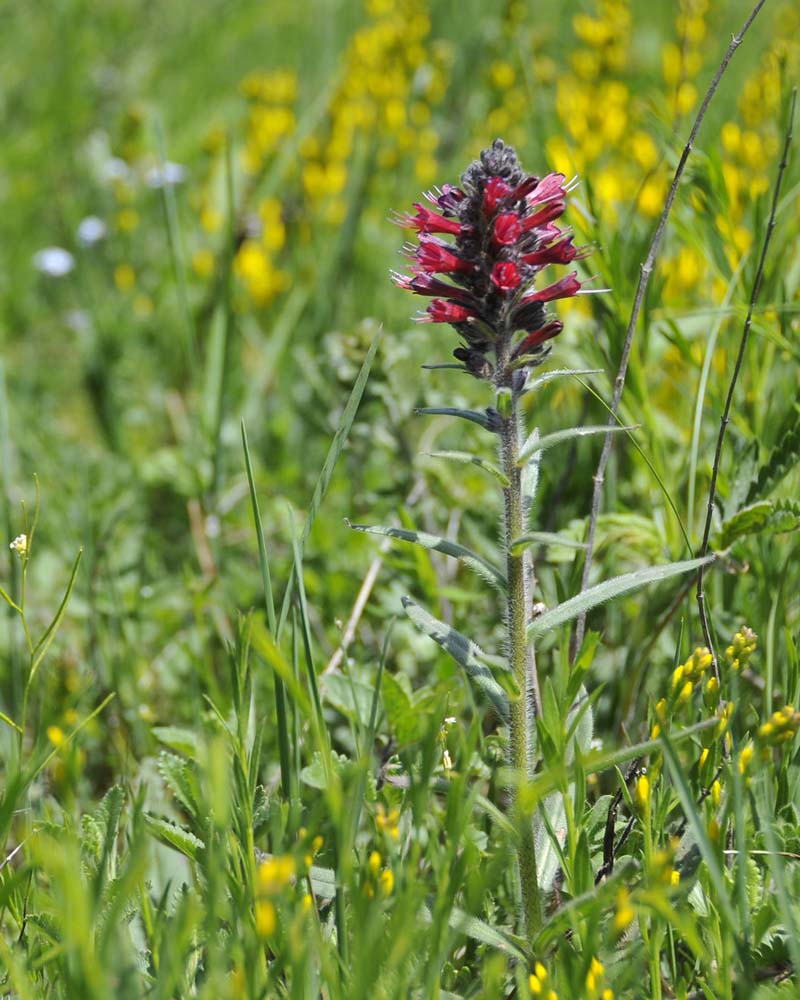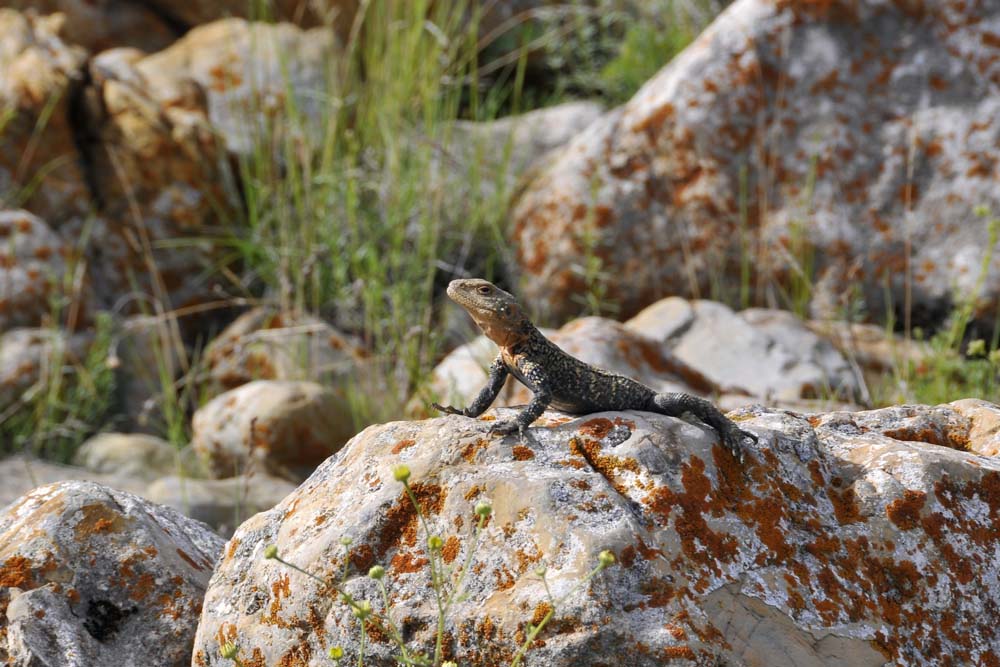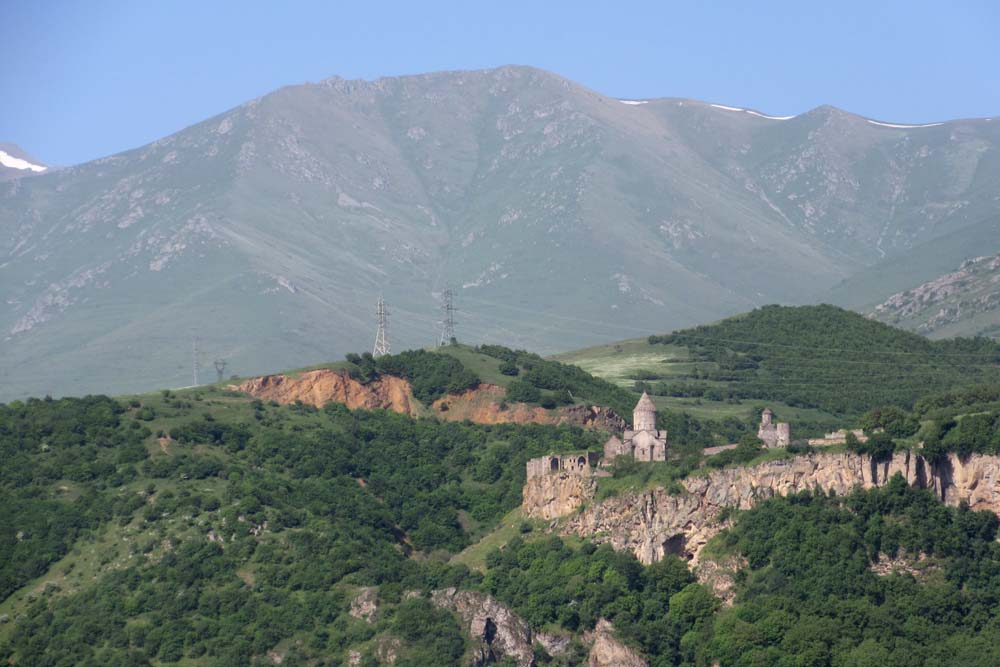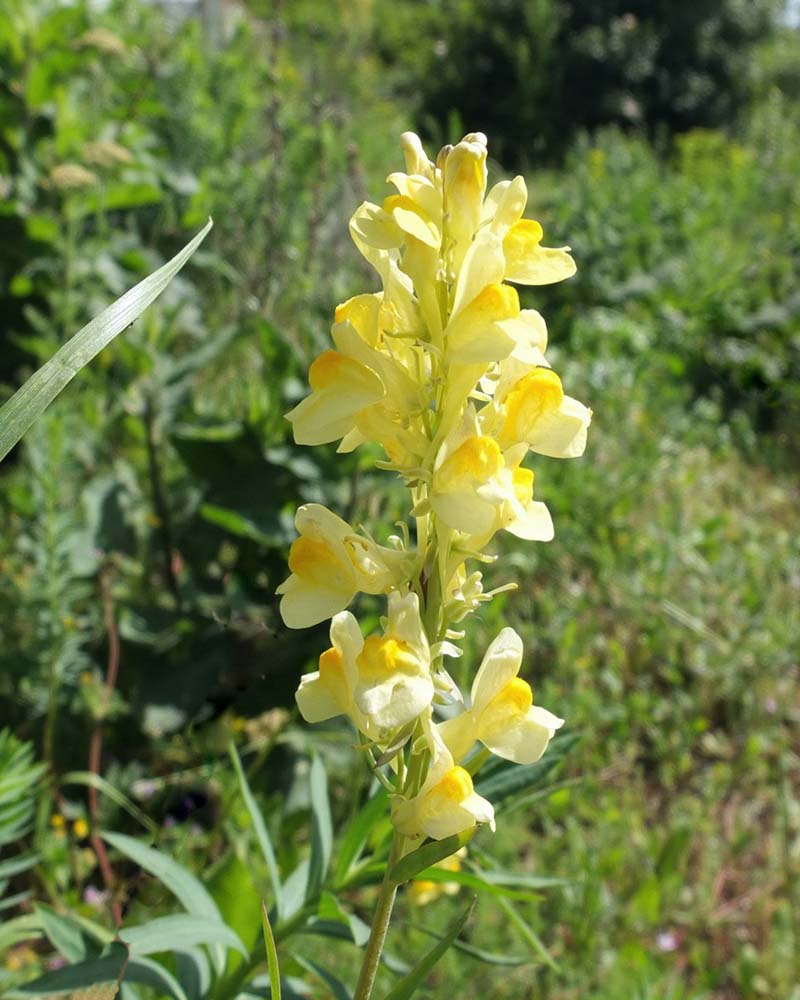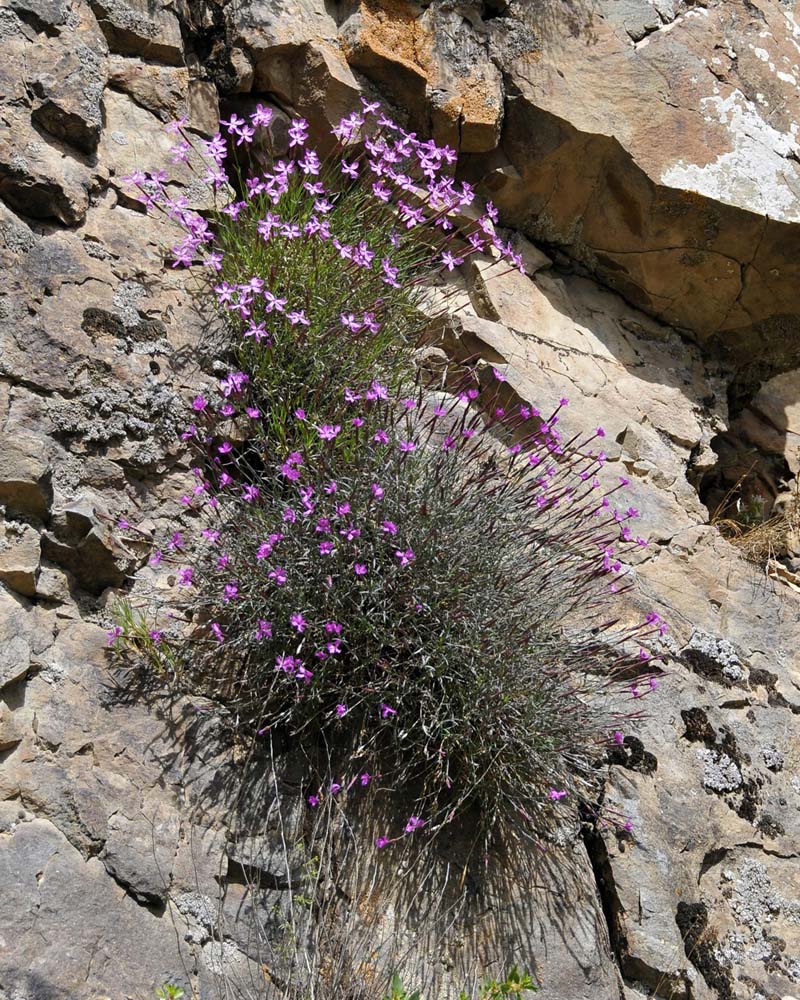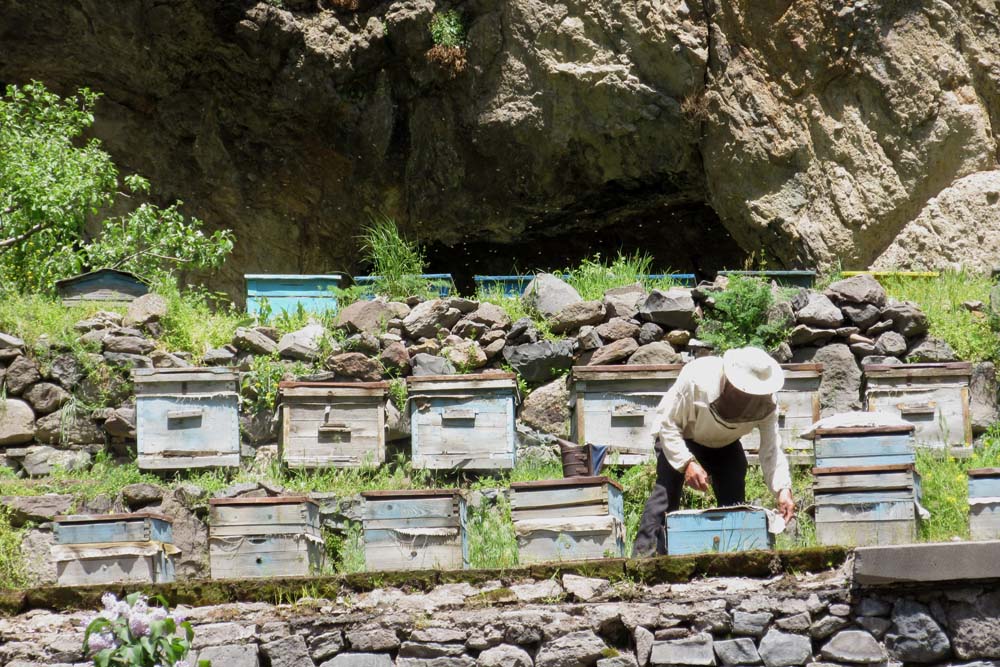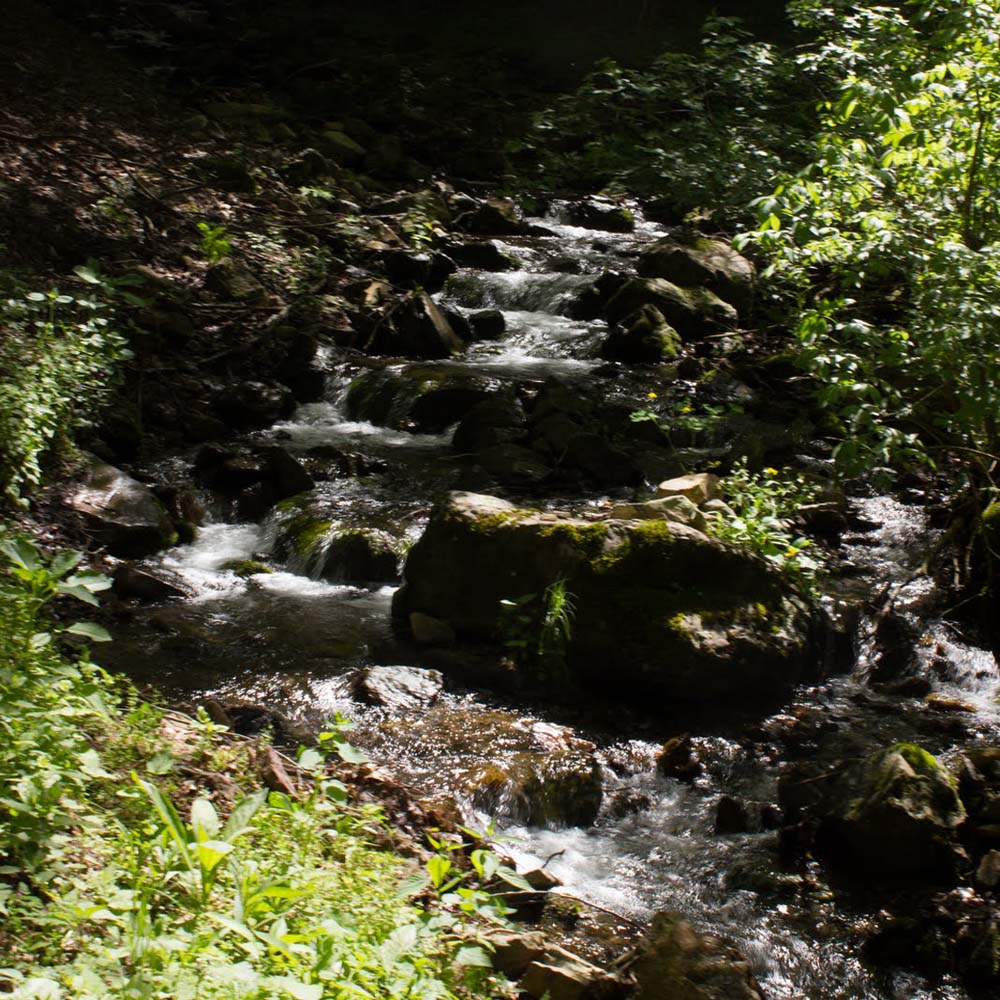May /mai 2015 – Botanical tour of Armenia / Voyage botanique en Arménie
Click on an image to enlarge it / Cliquez sur une image pour l’agrandir
Armenia, a country of high plateaus and mountain ranges, lies in the Caucasus region between the Black and Caspian Seas. Almost 90% of the land is over 1,000m and the average altitude is 1800m. The lowest point of the country, at less than 400m, lies in the north, and to the west is the highest point, Mount Aragats, rising to 4090m.
L’Arménie est un pays du Caucase caractérisé par des hauts plateaux et des chaines de montagnes élevées. Près de 90% du territoire se trouve à plus de 1000m d’altitude et l’altitude moyenne est de 1800m. Le point le plus bas du pays se situe dans le nord avec une altitude inférieure à 400m. A l’ouest, le point le plus élevé, le Mont Aragats culmine à 4090m.
Although Armenia represents only 16% of the Caucasus region it is very rich in biodiversity. More than half of all the Caucasian plant species grow here – about 3600 species distributed in 920 genera. Many of the endemic plants of the Caucasus can be found in Armenia and it is the country’s geographical position and relief which have provided such a diversity of plant habitats. These can be found at varying altitudes and include plains and semi-deserts, steppes, forests and alpine meadows.
Although Armenia represents only 16% of the Caucasus region it is very rich in biodiversity. More than half of all the Caucasian plant species grow here – about 3600 species distributed in 920 genera. Many of the endemic plants of the Caucasus can be found in Armenia and it is the country’s geographical position and relief which have provided such a diversity of plant habitats. These can be found at varying altitudes and include plains and semi-deserts, steppes, forests and alpine meadows.
The flora of the country has been cataloged in the 11 volumes of “The Flora of Armenia” published in 2010.
Our seven day botanical journey accompanied by botanist Anna Asatryan, our guide, Katharine Fedden, and local expert Marat Shakhbekyan, took us all around this fascinating country.
La flore arménienne a été répertoriée dans les 11 volumes de « La flore d’Arménie » achevée en 2010.
Notre visite botanique de sept jours accompagnés par la botaniste Anna Asatryan, notre guide, Katharine Fedden et expert local Marat Shakhbekyan, nous a pris tout autour de ce pays fascinant.
Day 1: 26 May
Yerevan – Geghard – Garni – Yerevan
First stop / Premier arrêt
On the Yerevan – Garni road, 100m before the Charents Arch (alt.1650m)
A la sortie de Yerevan, vers Garni, 100m avant l’Arc de Tcharentz (alt.1650m)
Also seen:
Cruciata laevipes (Rubiaceae)
Scutellaria sp. (Scrophulariaceae)
Silene sp. (Caryophyllaceae)
Second stop / Deuxième arrêt
100m further on at the Charents Arch (alt. 1600m) / 100 m plus loin, à l’Arc de Tcharentz (alt. 1600m)
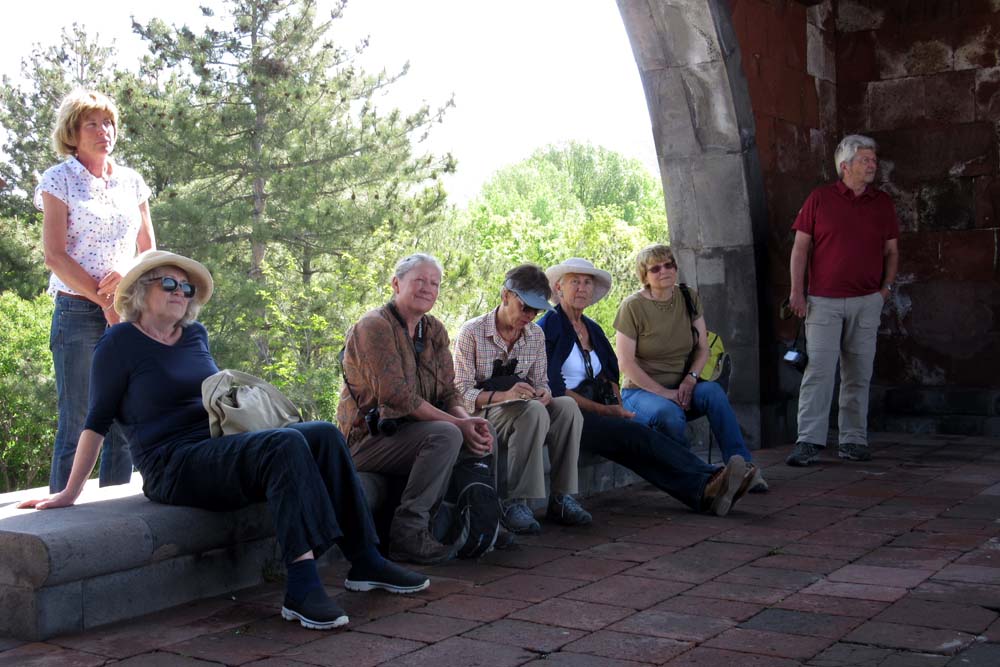
En-dessous de l’arc, à l’écoute de l’exposition d’Anna de la flore d’Arménie
Third stop / Troisième arrêt
Between Geghadir et Garni. Grassland steppe (alt. 1550m) / Entre Geghadir et Garni. Paysage de steppes (alt. 1550m)
And by the side of the street in the village of Garni: / Et en bord de rue dans le village de Garni:
Texte: Annie Nivière
Photos: Elisabeth Gratraud, Chantal Maurice, Annie Nivière, Hubert Nivière, Christine Daniels
Day 2: 27 May
Yerevan – Mont Aragats – Spitak pass – Vanadzor – Dilijan
Departure towards Mount Aragats, an extinct volcano which, at 4090m is the highest mountain in Armenia. On the climb towards the Amberd fort the road traversed wooded areas where we saw malus in flower, pyrus, sorbus, pines, juniper and Quercus macrantha.
Départ en direction du Mont Aragats, volcan éteint qui, avec 4090 m, est la plus haute montagne d’Arménie. En montant vers le Fort Hamberd, la route traverse des zones boisées avec malus en fleur, pyrus, sorbus, pinus, juniperus et Quercus macranthera.
Above the wooded area the grasslands were covered in blue and yellow flowers.
Au dessus de la zone boisée, les prairies sont colorées en bleu et jaune.
First stop / Premier arrêt
Fort Amberd and flora at the site / Fort Hamberd et exploration botanique du site (alt. 2300m)

Fortresse du 7ème siècle et église arménienne du 11ème
Second stop / Deuxième arrêt
On the return to the main road, a stop to admire Tulipa julia / Au retour, arrêt pour Tulipa julia (alt. 2200 m)
Third stop / Troisième arrêt
Still on the way back from Fort Amberd, another stop to look at high altitude flora (alt. 2230 m)
Toujours en revenant de Fort Hamberd pour explorer la flore des prairies d’altitude (alt. 2230 m)
Also seen:
Myosotis alpestris (Ranunculaceae)
Ornithogalum sigmoideum (Liliaceae)
Fourth stop / Quatrième arrêt
A quick stop a little further on to view an endemic ornithogalum (alt. 2300m)
Stop rapide un peu plus loin pour voir un ornithogale endémique (alt. 2300m)
Fifth stop / Cinquième arrêt
Picnic stop / Pour pique-niquer (alt. 2000m)
In the afternoon we continued towards Spitak, Vanadzor et Dilijan, crossing Spitak Pass at 2378m.
L’après-midi, route vers Spitak, Vanadzor et Dilijan. Passage de Spitak Pass (alt. 2378 m) .
Sixth stop / Sixième arrêt
Stop on the second hairpin bend of the descent. Flowers growing on a very steep slope.
Stop au 2ème lacet de la descente (2100m). Dans les prairies en forte pente.
Seventh stop / Septième arrêt
Several bends further down, a stop to see Iris furcata in a meadow
Quelques virages plus bas, pour voir Iris furcata dans une prairie (alt. 2000m)
Eighth stop / Huitième arrêt
After Spitak to look at Iris paradoxa / Après Spitak pour Iris paradoxa (1500m)
Also seen:
Artemisia absinthium (Asteraceae)
Texte: Annie Nivière
Photos: Elisabeth Gratraud, Chantal Maurice, Annie Nivière, Hubert Nivière, Christine Daniels
Day 3: 28 May
Dilijan – Forest Park – Makaravank – Dilijan
Morning in Dilijan National Park for a forest walk from the village of Aghavnavank (alt.1100 – 1250m)
Matinée dans le Dilijan National Park pour une marche en forêt au départ de Aghavnavank (altitude de 1100 à 1250m)
Leaving the main road, before and after the village:
Au départ du chemin, avant et après le village:
In the forest / Dans la forêt
Other trees present:
Fagus orientalis (Fagaceae)
Fraxinus excelsior (Oleaceae)
Juglans regia (Juglandaceae)
Tilia caucasica (Tiliaceae)
Herbaceous plants under the trees / Parmi la flore herbacée du sous-bois:
In the afternoon we travelled to the monastery of Makaravank, first in the coach, then in a minibus, along a rutted track, in a violent rainstorm. After the visit to the monastery there were two stops by the roadside to take photographs of Azerbaijan, just across the valley. At the second stop we had a quick exploration of a meadow.
L’après-midi, route vers le monastère de Makaravank d’abord en bus, puis en minibus sur une mauvaise piste, sous une violente pluie d’orage. Au retour de la visite du monastère, deux arrêts au bord de la piste pour faire des photos de l’Azerbaïdjan tout proche. Au 2ème arrêt, rapide exploration de la prairie.
Also seen:
Anacamptis pyramidalis Orchidaceae) (in bud / en bouton)
Texte: Annie Nivière
Photos: Elisabeth Gratraud, Chantal Maurice, Annie Nivière, Hubert Nivière, Christine Daniels
Day 4: 29 May
Dilijan – Sevan botanical garden – Artanish peninsula – Tsapatagh
From Dilijan, crossing the Sevan pass on route to Lake Sevan.
De Dilijan, en route pour le lac Sevan en passant par Sevan Pass.
First stop
After the tunnel we stopped to walk in a lily gorge, crossing the river in 4×4 vehicles. (alt. 2000m).
Premier arrêt
Après le tunnel, marche dans la gorge des lis, après avoir franchi la rivière en 4×4 (alt. 2000m).
Also seen:
Ajuga orientalis (Lamiaceae)
Arabis sp. (Brassicaceae)
Iris furcata (Iridaceae)
Isatis tinctoria (Brassicaceae)
Ornithogalum sigmoideum (Liliaceae)
Pedicularis sibthorpii (Scrophulariaceae)
Pedicularis wilhemsiana (Scrophulariaceae)
Second stop
Visit to Sevan botanical garden, guided by its director
The botanical garden at Sevan was set out in 1944, on 6.5 hectares of land. At an altitude of 2000m the climatic conditions are typical of the Sevan region – dry, with significant seasonal temperature fluctuations, hot sunny summers and very cold winters.
Deuxième arrêt
Visite du Jardin botanique de Sevan en compagnie de son directeur
Le Jardin Botanique de Sevan a été créé en 1944 sur 6,5 hectares. Avec une altitude de 2000 m, les conditions climatiques sont typiques de la région de Sevan : climat aride, importantes fluctuations des températures selon les saisons, fort ensoleillement l’été, hiver très froid.
There are 420 types of plant in the garden, some natives, some from North America, China and central Asia, including 225 varieties of trees. Cypresses, pines, maples, birch, barberries, honeysuckle, legumes and roses are particularly well represented. The garden’s objective is to create scientific collections in order to study how different species adapt to the difficult Armenian climatic conditions with a view to using them as trees for managed forests and as ornamental plants. The garden also plays an educational role.
Le jardin compte 420 espèces, natives ou introduites d’Amérique du Nord, Chine, Asie Centrale… dont 225 espèces d’arbres. Les familles des Cupressaceae, Pinaceae, Aceraceae, Betulaceae, Berberidaceae, Loniceraceae, Fabaceae et Rosaceae sont particulièrement bien représentées. L’objectif du jardin botanique est de créer des collections scientifiques pour étudier l’adaptation d’espèces à des conditions climatiques difficiles afin de promouvoir leur utilisation dans les secteurs forestier et décoratif. Il a également un but éducatif.
After a picnic lunch in the garden, we set off for the Artanish peninsula on the north side of Lake Sevan. On route, on the lower slopes of the hills, we saw numerous Iris paradoxa and dark pink cushions of Onobrychis cornuta.
Après le pique-nique dans le jardin, départ pour la Péninsule d’Artanish, au bord du Lac Sevan. Avant d’arriver à la péninsule, sur les bas-côtés de la route, nombreux Iris paradoxa. Les pentes sont couvertes par des coussins rose foncé d‘Onobrychis cornuta.

Pentes couvertes par des coussins rose foncé d’Onobrychis cornuta
Third stop
By the roadside, for a quick exploration of the flora, before setting off in minibuses along a rough track onto the Artanish peninsula (1920m).
Troisième arrêt
En bord de route pour une rapide exploration, avant de prendre une piste défoncée en minibus pour la péninsule d’Artanish (altitude 1920m).
.
Fourth stop / Quatrième arrêt
Alongside the track / En bord de piste
Also seen:
Geranium tuberosum (Geraniaceae)
Nepeta mussini (Lamiaceae)
Ornithogalum sigmoideum (Liliaceae)
Scutellaria orientalis (Lamiaceae)
Fifth stop / Cinquième arrêt
Exploration of a wide valley, dotted with shrubs / Exploration d’un grand vallon parsemée d’arbustes (alt.1920m à 1980m)
Also seen:
Adonis aestivalis (Ranunculaceae)
Ajuga orientalis (Lamiaceae)
Arenaria sp.
Geranium tuberosum (Geraniaceae)
Juniperus depressa (Cupressaceae)
Linum nervosum (Linaceae)
Onobrychis michauxii (Fabaceae) not in flower / non fleuri
Scabiosa micrantha (Dipsacaceae)
Sedum caucasicum (Crassulaceae)
Spiraea crenata (Rosaceae)
Spiraea hypericifolium (Rosaceae)
Ziziphora rigida (Lamiaceae) not in flower / non fleuri
Sixth stop / Sixième arrêt
In a rocky area with numerous agamid lizards basking on the rocks / Dans une zone plus rocailleuse avec de nombreux « lézards » sur les rochers
Texte: Annie Nivière
Photos: Elisabeth Gratraud, Chantal Maurice, Annie Nivière, Hubert Nivière, Christine Daniels
Day 5: 30 May
Tsapatagh – Selim Pass – Zorats Karer – Goris
Around the hotel, Consolida orientalis (Ranunculaceae) were flowering. Our minibus transport took us along the pot-holed road that runs along the east coast of Lake Sevan. Many Iris paradoxa were growing on the lower slopes.
Autour de l’Hôtel, quelques Consolida orientalis (Ranunculaceae). Transport en minibus sur la route défoncée qui longe le lac Sevan côté est. Sur les bas-côtés de la route, nombreux Iris paradoxa.
First stop / Premier arrêt
To explore a large meadow / Pour explorer une grande prairie (alt.1900m)
We rejoined our coach at Martuni then set off for the Selim Pass.
Récupération du bus à Martuni et route vers Selim Pass.
Second stop / Deuxième arrêt
Before reaching the top of the pass, we made a quick stop to explore a high altitude meadow. / Avant Selim Pass, exploration rapide d’une prairie d’altitude (2300 m).
Also seen:
Caltha polypetala (Ranunculaceae)
Cardamine uliginosa (Brassicaceae)
Just below the summit of the pass, a stop at the Selim Caravanserai, originally constructed in 1332, then a descent to a restaurant by a river, just before the junction with the Yeghegnazor road. After lunch we continued towards Goris
Arrêt au Caravanserai médiéval de Selim, construit 1332. En descendant de Selim Pass, repas au restaurant au bord de la rivière, avant le croisement de la route d’Yeghegnazor. Après le repas, route vers Goris.
Third stop / Troisième arrêt
Between Yeghegnadzor and Saravan / Entre Yeghegnadzor et Saravan (alt.1300m)
Also seen:
Anchusa azurea (Boraginaceae)
Sedum caucasicum (Crassulaceae)
Fourth stop / Quatrième arrêt
The prehistoric archeological site of Zorats Karer / Site mégalithique de Zorats Karer (alt.1760m)
Texte: Annie Nivière
Photos: Elisabeth Gratraud, Chantal Maurice, Annie Nivière, Hubert Nivière, Christine Daniels
Day 6: 31 May
Goris – Monastère de Tatev – Bardzravan – Goris
On the road to Tatev monastery / Départ pour le monastère de Tatev
First stop / Premier arrêt
To take photographs of the monastery in the distance / Pour faire des photos du monastère au loin
Second stop / Deuxième arrêt
We followed a footpath to the bottom of a gorge / En suivant le sentier au fond de la gorge (alt.1000m)
Then a change, from the coach to 4x4s / Puis échange du bus contre des 4×4.
Third stop / Troisième arrêt
Above the Tatev monastery / Au dessus du monastère de Tatev
Plants noted:
Cerinthe minor (Boraginaceae)
Hyoscyamus niger (Solanaceae)
Then along a track in 4×4 vehicles for several kilometres, high above the monastery / Piste en 4×4 sur quelques kilomètres au dessus du monastère de Tatev.
Fourth stop / Quatrième arrêt
A walk through high altitude meadows / Marche pour explorer les prairies d’altitude (2000m)

Notre guide botanique, Anna Asatryan (au centre) et quelques membres du groupe admirent la vue
*Armenian Red List (endangered) / Liste rouge d’Armenie (en danger)
**Armenian Red List (vulnerable) / Liste rouge d’Armenie (vulnérable)
Also seen:
Adonis aestivalis (Ranunculaceae)
Alchemilla mollis (Rosaceae)
Dactylorhiza romana Orchidaceae)
Dactylorhiza urvilleana presque fané (Orchidaceae)
Gymnadenia conopsea en bouton (Orchidaceae)
Orchis mascula (Orchidaceae)
Pedicularis sibthorpii (Scrophulariaceae)
Primula veris défleuri (Primulaceae)
Fifth stop / Cinquième arrêt
Along the road back to the monastery / Le long de la piste en revenant vers le monastère
Plants noted:
Iris imbricata (Iridaceae)
Steveniella satyrioides (Orchidaceae)
Visit to Tatev monastery, returning by cable car, then by coach to Goris. / Visite du Monastère de Tatev. Retour en téléphérique. Route jusqu’à Goris.
Texte: Annie Nivière
Photos: Elisabeth Gratraud, Chantal Maurice, Annie Nivière, Hubert Nivière, Christine Daniels
Day 7: 1 June
Goris – Noravank –Yerevan
First stop / Premier arrêt
A roadside walk between Saravan and Vayk / Marche le long de la route, entre Saravan et Vayk (alt.1350m)
Second stop / Deuxième arrêt
Visit to Noravank monastery / Visite du Monastère de Noravank (alt.1500m)
Also seen:
Amygdalus fenzliana (Rosaceae)
Ziziphus jujuba (Rhamnaceae)
Third stop / Troisième arrêt
From Noravank monastery we walked down the road for several hundred metres. / Depuis le Monastère de Noravank, descente à pied le long de la route sur quelques centaines de mètres.
Then, lunch in a cave restaurant. / Repas au restaurant dans une grotte.
Fourth stop / Quatrième arrêt
After Karki, on the road towards Yerevan / Après Karki, sur la route vers Yerevan. (alt.1300m)
Thank you very much, Anna, Katharine and Marat for a wonderful trip. / Merci beaucoup à Anna, Katharine et Marat pour un voyage merveilleux.
Texte: Annie Nivière
Photos: Elisabeth Gratraud, Chantal Maurice, Annie Nivière, Hubert Nivière, Christine Daniels
Impressions of Armenia / Impressions de l’Arménie
Dusk was falling, and from the plane window one could see fields and roads with just the occasional car. Then, looming above the valley in which Yerevan sits, there was Mount Aragats, massive and snow-capped. The airport is modern and the only thing to strike one walking towards the baggage claim was a large poster showing a Turkish head under the year 1915 and the head of Adolf Hitler under 1945. Yes, this was the centenary of the genocide and one was later to see tee-shirts with a message about Armenian capacity to survive and on hoardings, the words ‘I Remember and Demand’.
Yerevan is such a mixture of the spanking new, of dilapidated houses with wooden balconies and of the metal and concrete detritus of Soviet times. The road into the city is a jumble of nightclubs and casinos, of snack shops, of Mercedes showrooms and then one feels the full weight of Soviet imperialism in the grand stone buildings of Republic Square.
On the Tuesday morning we slowly shook off the lacklustre suburbs of the capital and found ourselves looking at irises on a slope from which we could see the massive form of Mount Aragats across the valley.
A visit to the Geghard monastery was followed by lunch in a private house set above the valley on the edge of which stands the Garni temple.
There, as we were to see frequently, sat the merchants of large cakes, of home-made vodka and of apricot leather (known locally as ‘fruit bread’ since it has the same flat form as the main type of bread in the country, ‘lavash’).
Later a tour of Yerevan revealed the ‘Cascades’, a very high, stepped flow of terraces descending to a new part of the city, the opera house and the Russian inspired leisure parks, with their cafes, friendly faces and play areas for children.
The highlight of the evening was the arrival, in the hands of the restaurant manageress, of a large dish of ‘fruit rice’, while she performed a local dance.
Wednesday saw us leave Yerevan en route for Dilijan (the Switzerland of Armenia). We climbed through high meadows, where Yezidi herders had set up their camps of tents and rusting Russian trailers, to visit the fortress of Amberd, the only one to resist the Mongols.
Everywhere there were streams and the impression was of a hillside in movement. Later, we stopped at a Russian village, the home of a particular religious group which Stalin had exiled and suddenly, everyone was tall and blond.
Dilijan is in thickly forested country and when we left the area on Friday we entered a tunnel on a mountain pass and on the other side found no trees, but a line of green hills. We pulled up to see some hillside flowers, but there was a river in the way. No problem, a four wheel drive vehicle appeared and ferried people across, four at a time.
That evening we were lodged in another Tufenkian Group heritage hotel, close to Lake Sevan and were told that since the road south was impassable by coach, our coach would cut back north and meet us on the other side of the lake. Thus began a minibus journey over potholes and ruts as we moved south and then west to turn around the southern end of the lake. This was a perfect example of the efficient ad hoc organisation which marked our whole visit.
In the evening, we wound our way down to the town of Goris, distinguished by its old stone houses, many with wooden balconies, and its water channels at the side of the road. In the nearby cliffs are troglodyte dwellings and the whole place is surrounded by mountains.
Next day, after a stop at the local bakery to buy lavash,
we set off for the Tatev monastery, sited, majestically, on its rock and backed by a cirque of mountains, many over 3000 meters.
The next, and final, day we headed back to Yerevan, visiting the Noravank monastery and eating in a cave restaurant in the gorge below.
One came away with impressions of an abundance of wild flowers, of the majesty of snow-capped mountains, of ancient monasteries. All around were streams, fruit trees, road-side produce and sheep and cattle making the transhumance. There are older, more soberly dressed people, but for the young, the tee-shirt is king and the promises on them – ‘All night long’ and ‘Count on an extra 87 miles per tank’, leave you with hope for Armenia.
Text: Jason Spencer-Cooke
Photos: Hubert Nivière, Jock Shearer, Christine Daniels
![]()








